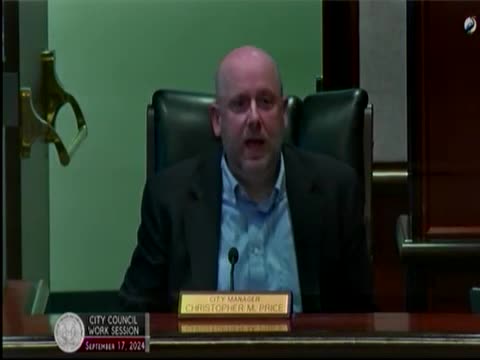Chesapeake plans ambitious trails and connectivity overhaul
September 17, 2024 | Chesapeake City (Independent City), Virginia
This article was created by AI summarizing key points discussed. AI makes mistakes, so for full details and context, please refer to the video of the full meeting. Please report any errors so we can fix them. Report an error »

In a recent government meeting, city officials discussed the ongoing efforts to update Chesapeake's comprehensive plan, with a particular focus on the Trails and Connectivity Plan. This initiative aims to enhance the city's transportation network by integrating non-motorized elements such as bicycle, pedestrian, and equestrian facilities alongside traditional roadways.
The planning department has engaged with community stakeholders over the past 18 months to gather input and refine the plan. The updated Trails and Connectivity Plan is designed to connect various open spaces, historic sites, schools, and neighborhoods through a network of over 300 miles of trails, bike lanes, and blueways. The plan emphasizes equitable access to recreational areas for all residents, particularly in disadvantaged communities.
City officials highlighted the importance of aligning local efforts with regional transportation networks, including connections to trails that extend beyond Chesapeake into neighboring localities and even North Carolina. The plan also incorporates feedback from community events and surveys, ensuring that residents' desires for safer routes and increased access to parks are prioritized.
During the meeting, officials outlined the next steps for the plan's implementation, including meetings with the Historic Preservation Commission and the Bicycle and Trails Advisory Committee. They acknowledged the need for a phased approach to development, considering budget constraints and the high costs associated with full implementation.
Concerns were raised regarding existing infrastructure safety, particularly in light of recent accidents involving cyclists. Officials assured attendees that the plan includes best practices for immediate improvements, such as the introduction of bike boulevards on lower-traffic streets, which would enhance safety without significant costs.
The meeting concluded with a commitment to continue refining the plan based on community feedback and to prioritize projects that close existing gaps in the trail network. City officials expressed optimism about the potential for increased tourism and economic benefits through improved access to Chesapeake's natural and historic resources.
The planning department has engaged with community stakeholders over the past 18 months to gather input and refine the plan. The updated Trails and Connectivity Plan is designed to connect various open spaces, historic sites, schools, and neighborhoods through a network of over 300 miles of trails, bike lanes, and blueways. The plan emphasizes equitable access to recreational areas for all residents, particularly in disadvantaged communities.
City officials highlighted the importance of aligning local efforts with regional transportation networks, including connections to trails that extend beyond Chesapeake into neighboring localities and even North Carolina. The plan also incorporates feedback from community events and surveys, ensuring that residents' desires for safer routes and increased access to parks are prioritized.
During the meeting, officials outlined the next steps for the plan's implementation, including meetings with the Historic Preservation Commission and the Bicycle and Trails Advisory Committee. They acknowledged the need for a phased approach to development, considering budget constraints and the high costs associated with full implementation.
Concerns were raised regarding existing infrastructure safety, particularly in light of recent accidents involving cyclists. Officials assured attendees that the plan includes best practices for immediate improvements, such as the introduction of bike boulevards on lower-traffic streets, which would enhance safety without significant costs.
The meeting concluded with a commitment to continue refining the plan based on community feedback and to prioritize projects that close existing gaps in the trail network. City officials expressed optimism about the potential for increased tourism and economic benefits through improved access to Chesapeake's natural and historic resources.
View full meeting
This article is based on a recent meeting—watch the full video and explore the complete transcript for deeper insights into the discussion.
View full meeting
